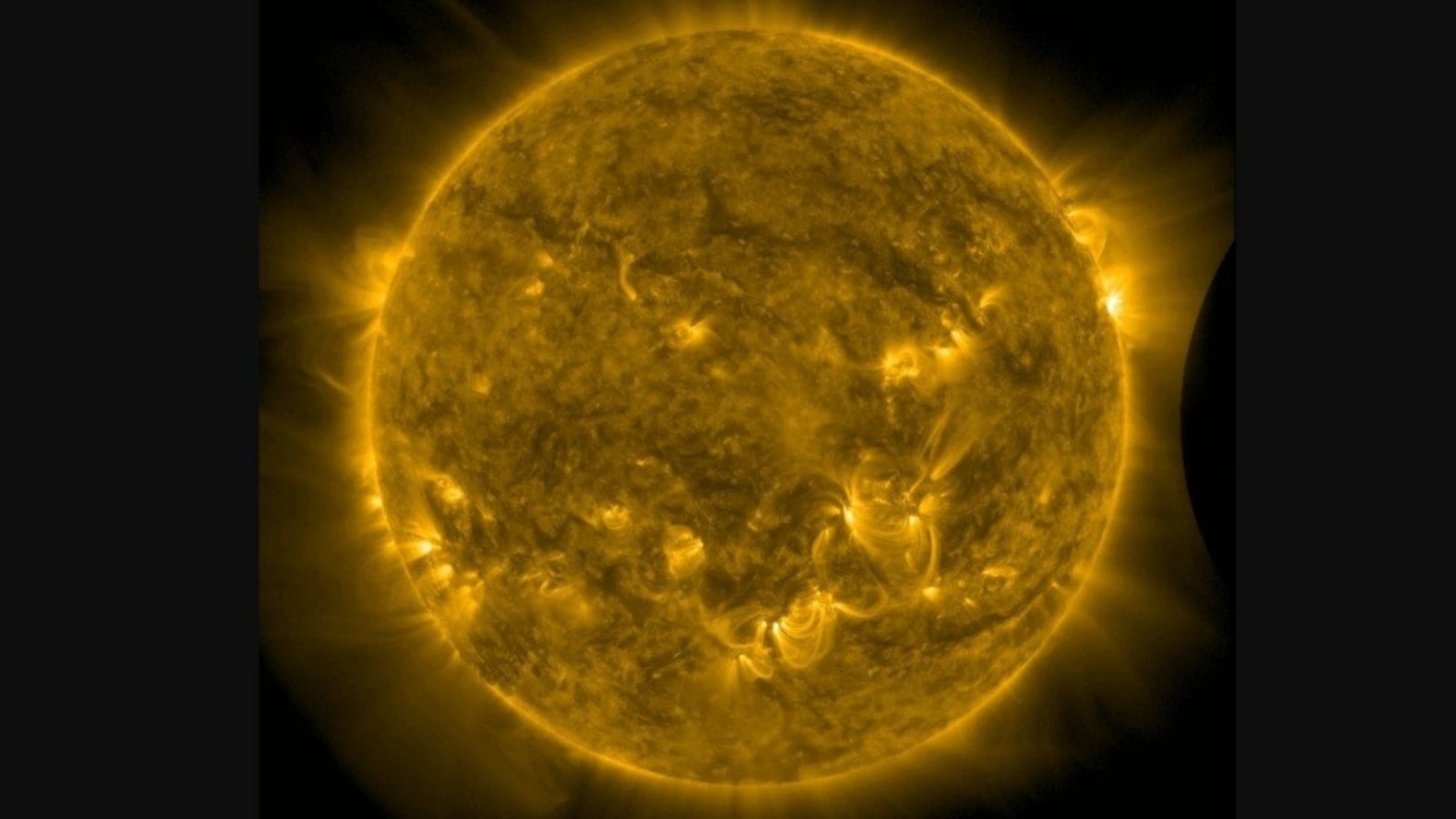NASA just recorded a stunning solar eclipse by the Moon- from SPACE
NASA's Solar Dynamics Observatory (SDO) has recorded a 35-minute partial solar eclipse as Moon came in front of the Sun.

NASA's Solar Dynamics Observatory (SDO) has captured a stunning view of a solar eclipse from a unique vantage point in space. Yes, you read that right! The Moon passed in front of the sun, producing a partial solar eclipse on Wednesday, however, it was only visible from space. As reported by SpaceWeather.com the SDO recorded the 35-minute partial solar eclipse. "At the peak of the eclipse, the Moon covered 67 per cent of the sun, and lunar mountains were backlit by solar fire," reported the portal.
The high-resolution images captured by the NASA SDO reveal how light diffracts around SDO's optics and filter support grids. Since its launch in February 2010, SDO has been studying the sun's magnetic field, sunspots and other aspects that influence activity during the regular 11-year solar cycle."SDO studies how solar activity is created and drives space weather. The spacecraft's measurements of the sun's interior, atmosphere, magnetic field, and energy output all work to help us understand the star we live with," NASA shared.
The SOD has become a part of a network of solar spacecraft from NASA and its partner agency, the National Oceanic and Atmospheric Administration (NOAA).
Meanwhile, the sun has been quite active lately as well as unusually early in its cycle. It is expected to reach the peak around 2025. Nasa's STEREO-A spacecraft recorded several magnificent coronal mass ejections (CME) earlier this year, however, they didn't pose any threat to our planet. For the unversed, CMEs are giant explosions that send plasma hurtling through space and if it collides with Earth, the material triggers geomagnetic storms sometimes causing satellite and power grid disruptions. Since the Sun has been spotted in a period of heightened solar activity, scientists are monitoring its impact on technologies. SOlar flares can cause internal damage in the components, leading to large scale power outages and technology disruptions.
Catch all the Latest Tech News, Mobile News, Laptop News, Gaming news, Wearables News , How To News, also keep up with us on Whatsapp channel,Twitter, Facebook, Google News, and Instagram. For our latest videos, subscribe to our YouTube channel.





























